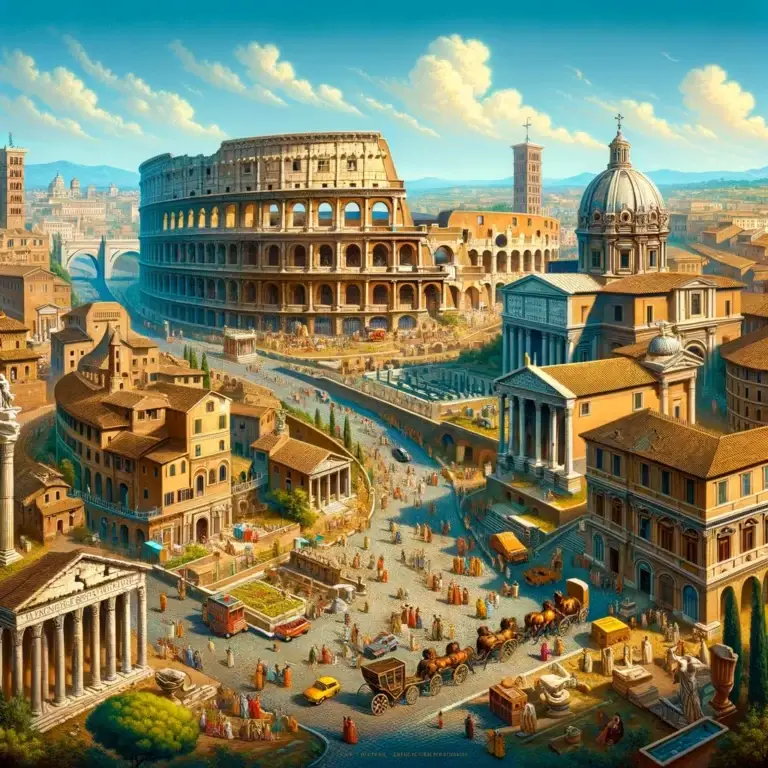Ancient Rome

Table of Contents
Ancient Rome Overview
Ancient Rome, from approximately 753 BCE to 476 CE, was a civilization centered around the city of Rome and the expansive Roman Empire. Founded according to legend by Romulus and Remus, Rome grew into a dominant power in the Mediterranean, incorporating diverse cultures and territories.
The Roman Republic, established in 509 BCE, evolved into an empire under Augustus Caesar in 27 BCE. Renowned for its law, engineering, and military prowess, Rome left lasting legacies in governance, infrastructure, and language (Latin).
Notable figures include Julius Caesar, Augustus, and Constantine. The empire’s decline was marked by internal strife, economic instability, and external invasions, leading to its eventual fall in 476 CE and the onset of the Middle Ages in Europe.
Rise and Fall of Ancient Rome
According to legend, ancient Rome was founded in 753 BCE by Romulus and Remus, twin brothers raised by a she-wolf. The city grew into one of history’s most powerful and influential civilizations.
The Roman Republic was established in 509 BCE, marking the monarchy’s end and representative government’s beginning. Rome was ruled by elected officials, including consuls, senators, and assemblies.
The Punic Wars, fought between Rome and Carthage from 264 to 146 BCE, were a series of conflicts over control of the Mediterranean. Rome emerged victorious and expanded its territory, eventually dominating the entire region.
Julius Caesar, a military general and statesman, rose to power in Rome during the 1st century BCE. He played a crucial role in the Roman Republic’s collapse and the Roman Empire’s rise.
The assassination of Julius Caesar in 44 BCE led to a power struggle among his successors, including Octavian (later known as Augustus), Mark Antony, and Lepidus. Octavian emerged victorious and became the first Roman emperor in 27 BCE, marking the beginning of the Roman Empire.
The Pax Romana, or Roman Peace, was a relative stability and prosperity period from 27 BCE to 180 CE. It was characterized by peace, economic growth, and cultural flourishing throughout the empire.
Roman society was hierarchical, with citizens divided into social classes based on wealth and ancestry. At the top were the patricians, wealthy landowners, and aristocrats, followed by the plebeians, commoners, and slaves.
Roman law, known as the Twelve Tables, formed the basis of legal systems in many modern Western countries. It emphasized principles of justice, equality, and the rights of individuals.
Roman engineering and architecture were highly advanced, with innovations such as aqueducts, roads, bridges, and amphitheaters. The Colosseum, built in Rome in the 1st century CE, remains one of the most iconic symbols of Roman civilization.
The decline and fall of the Roman Empire occurred over several centuries, beginning in the 3rd century CE, with political instability, economic decline, and invasions by barbarian tribes. The empire officially fell in 476 CE when the Germanic chieftain Odoacer deposed the last Roman emperor, Romulus Augustulus.
Related Links
Ancient Greece
Imperialism
Italian Renaissance
The Renaissance Era